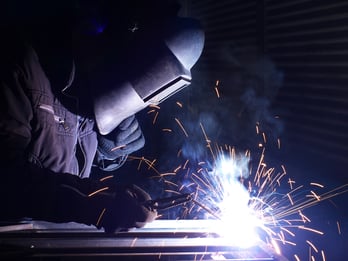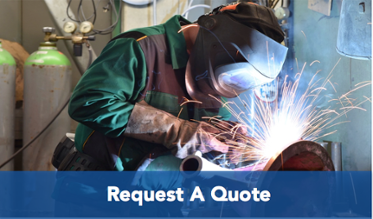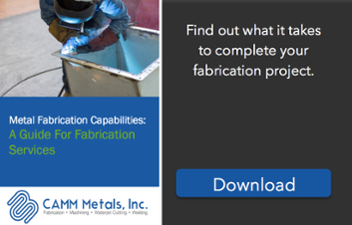 Fabricated metal products are very common, however, few people understand how the metal fabrication process works. In fact, many people think of welding when they hear metal fabrication, despite the fact that welding is only one process that metal fabricators use. This post will examine several different factors of metal fabrication to help educate you before the next situation when you need to rely on the services of a metal fabrication company
Fabricated metal products are very common, however, few people understand how the metal fabrication process works. In fact, many people think of welding when they hear metal fabrication, despite the fact that welding is only one process that metal fabricators use. This post will examine several different factors of metal fabrication to help educate you before the next situation when you need to rely on the services of a metal fabrication company
So, what exactly is metal fabrication?
Simply put, Metal fabrication is a manufacturing process used to shape metal into parts or end products. CAMM Metals uses a wide variety of techniques to shape sheet metal into a part or good. Many metal fabricators use sheet metal, which can be up to .25 inches thick. Fabricators then convert this sheet metal into products or tools. We cut, fold, or shape metal to create the finished part.
Although metal fabrication can be used to mass produce products, it can also be used to create large runs of customized fabricated metal products. These projects typically include the design and fabrication of customized metal parts to fit a businesses’ needs. We’ve covered some of our custom projects in the past, like a custom fuel pump test stand and a custom beer tank (insert links).
What are the Benefits of Metal Fabrication Shops?
The main benefit of metal fabrication shops is the centralization of these many processes that are often required to be performed in parallel via a collection of vendors. A one-stop metal fabrication shop helps contractors limit their need to work with multiple vendors to complete complicated projects.
What does the metal fabrication process look like?
Though it’s true that most metal fabrication focuses on the cutting and shaping of metal, there are several steps typically involved in a successful fabricated project. The fabrication process starts wit ha design and ends with a finished and functional part. Here’s a brief breakdown of the steps included in a typical fabrication project.
Designing the Project: The first and most important step is the design of the part/product. Many businesses come to us with a completed design; however, some come to us with a prototype, in which case, we work with them to refine and test the design before starting a large run. Most Metal fabricators use computer aided design programs (CAD) or computer aided manufacturing (CAM) during the manufacturing process. Using CAD and CAM programs, we’re able to develop a 3D prototype of an object before we actually begin to work with the metal.
Considering that a project can include many components, this phase helps to ensure that the product will function as required. During the design process, we’ll also work to clarify the types of metal that will be used and the finishing process that’s required.
Fabricating the Part: The second step in a metal fabrication job encompasses the actual building process. During this phase, a metal fabricator cuts and shapes each of the components from the design phase. There's a wide range of tools used in these projects-- you can view our machinery and capabilities here. For ever unique process, there is a machine specific machine used to carry out that process. For instance, on any given job, a metal fabricator might be required to use a laser cutting, press brake, or roll forming equipment. Since each project is different, the equipment required for that project will also be different. Fortunately, CAMM Metals operates in a 17,000 sq foot facility stocked with state-of-the-art equipment. View this page to get an idea of the machines that are spread throughout our facility.We often employ CNC tools (computer numerical controls) to ensure that each piece is cut exactly to the specifications from the design. These tools extract a computer program of the exact commands and specifications used to create a piece.
Assembling and Finishing the Project: The last step in metal fabrication is finishing and assembling the pieces into the final product-- these processes help to strengthen the product and ensure that it's ready for its intended use. Finishing techniques like deburring help to make sure that materials function properly and have no excess material. Beyond that, we can powder coat the product to ensure that it's aesthetically pleasing (if this is necessary).
CAMM Metals | CT Metal Fabrication Company
It's crucial to do your research when choosing a metal fabrication, as not all companies are capable of completing the same quality of work. CAMM Metals has years of experience, honing our skills across the board to deliver a quality product and measurable bottom line value to our customers.



